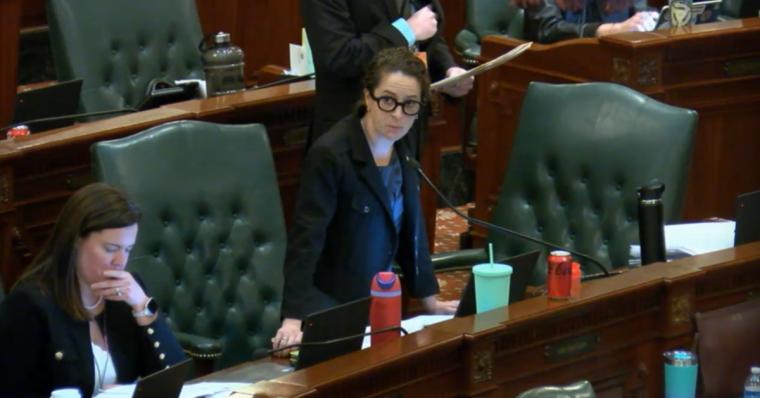
One of the bigger state budget-expansion fights we could see play out in Springfield this spring is the creation of a permanent $300 Child Income Tax Credit.
The new proposal has been scaled back from last year’s $700 per child tax credit bill, which went nowhere in the House after it was introduced in February and ultimately had fifteen sponsors and co-sponsors. But proponents say even the downsized version would make a major difference.
The problem, of course, is the cost, pegged at about $300 million per year. As I’ve told you before, numbers-crunchers with the Governor’s Office of Management and Budget are saying that Illinois could face a budget deficit of $891 million next fiscal year, which begins July 1. That deficit could rise to $1.4 billion in Fiscal Year 2026 and $1.66 billion in FY27.
But this issue has real potential to take off in the General Assembly.
“We have the data that shows roughly sixty percent of the recipients of this benefit across the state would be Black and Brown households,” said Representative Mary Beth Canty (D-Arlington Heights) recently on WTTW’s Chicago Tonight program. “We're talking about being able to make a difference in the lives of about a million and a half children across Illinois. That is a game-changer for families.”
The idea is framed as a partial replacement for the now-expired but massive 2021 expansion of the federal Child Tax Credit. “Monthly checks of up to $3,600 offered parents reliable resources to pay for basic goods, like formula, diapers, and school supplies, and basic necessities like shelter, utilities, and food,” wrote Natalie Foster in a recent Crain’s Chicago Business op-ed. “The expanded federal CTC slashed child poverty in half, decreased food insecurity, and improved educational outcomes.”
“This is something that has to be dealt with at the federal level,” Representative Canty admitted last week. Efforts are indeed being made in Washington DC to revive a scaled-down version of the federal tax credit program. A bipartisan agreement has been announced, but DC being DC, nobody can be certain that it can actually pass.
So the states, Canty said, “have a real opportunity to make a difference. There are fourteen other states that are running programs like this.”
Asked how she would pay for the new tax credit program, Canty said, “Where there is a will, there's a way,” which is not exactly an answer. “We always talk about a budget being a moral document,” Canty said, “So, when you talk about your policies, those are the things that you want people to know, but what we fund is where your morals really are. Those are your real values.”
All true, of course, but, unless Governor JB Pritzker goes along with it, this could be one of the most interesting challenges to his effort to tamp down attempts to add permanent costs to the budget in the face of possible future deficits.
Keep in mind that more than half of all current House Democrats never served under then-Governor Bruce Rauner’s budget disasters, and the budget crunch during the pandemic’s early stage was beyond anyone’s control and was dealt with in just a few session days, so the newbies really have no idea what it’s like to try and manage a possible deficit year.
Meanwhile, Capitol News Illinois reported in December on the Commission on Equitable Public University Funding, which is “tasked with developing a new model for funding higher education.”
The news service reported that “some draft meeting materials presented at the board’s November meeting suggest it would require as much as an overall $14,000 per-student increase in state appropriations to fully fund higher education. With 130,000 undergraduates and 56,000 graduate students enrolled at state universities this year, these numbers suggest the needed funding increase could reach into the billions.”
Not included in the article was the arithmetic, which would total $2.6 billion in spending. That’s per year, by the way.
There’s just no possible way the state can pay for that. But it could be in the realm of possibility for another spending “ramp,” something along the line of what the state did with pension funding and with gradually bringing all K-12 schools up to adequate funding levels.
Anyway, just add that potential cost to the pile.
Also, before the break, I mistakenly identified Pat Quinn as the former governor who tried to appoint the Citizens Utility Board’s executive director as the Illinois Commerce Commission chair. Rod Blagojevich did that. Sorry.
Rich Miller also publishes Capitol Fax, a daily political newsletter, and Capitol Fax.com.










